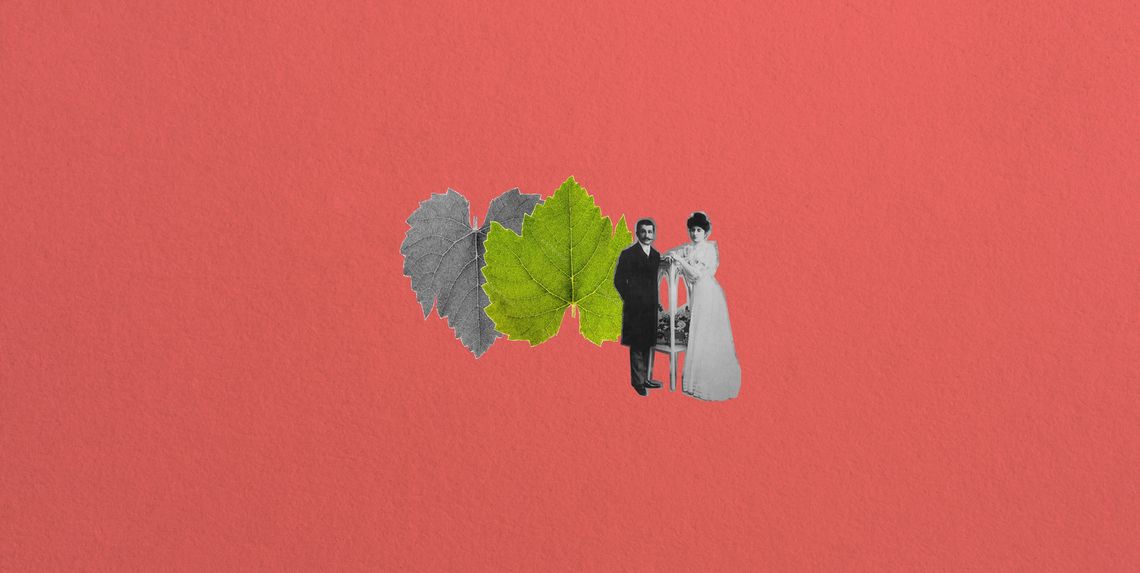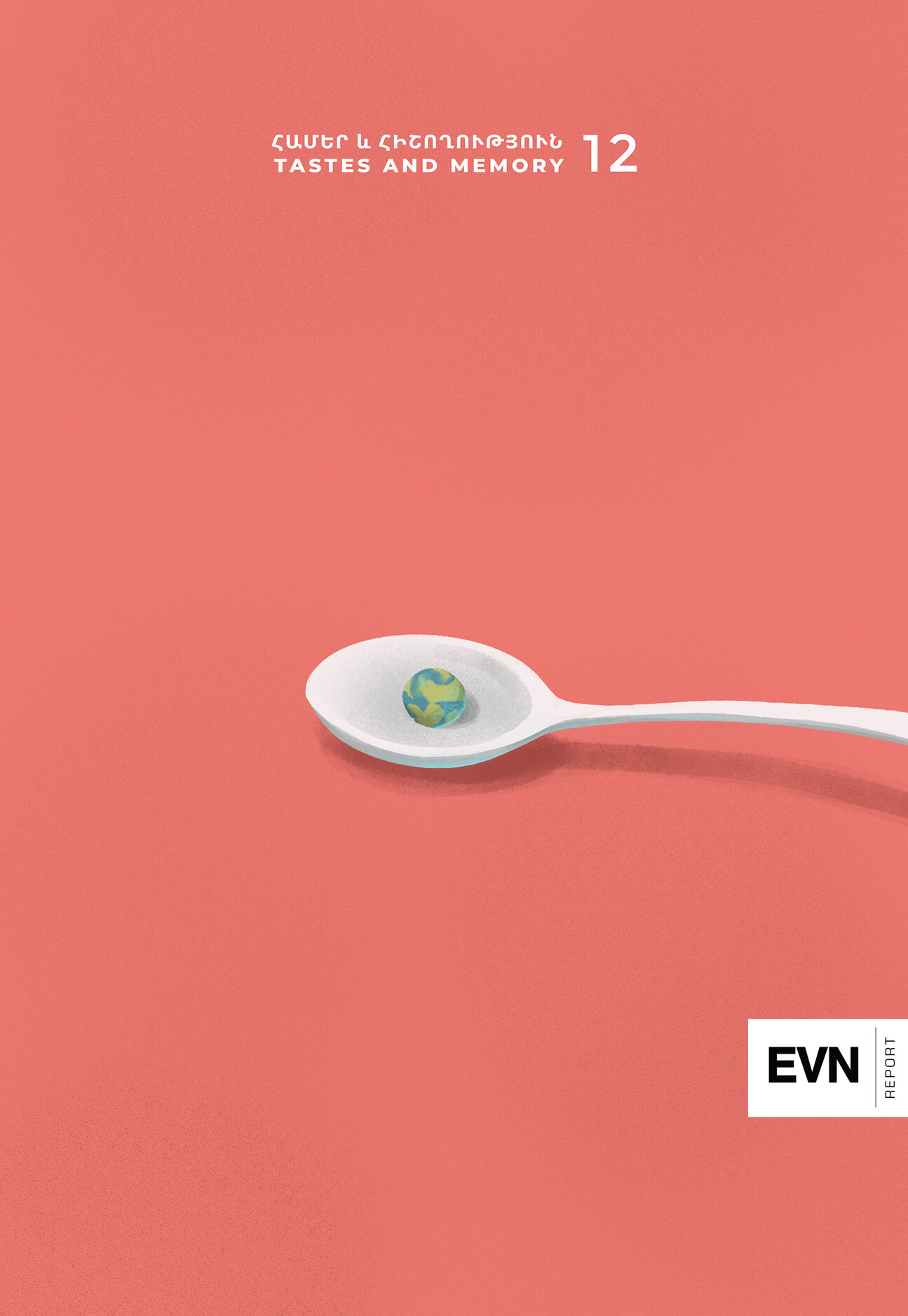

Illustration by Armine Shahbazyan.
It is almost nonsensical, puzzling in a way that goes against convenience and yet when you think about it, it makes a world with its own sense. Made of stuff that costs next to nothing, made into something by the arduous work of many women and consumed in mere minutes, much like the sand mandalas of Buddhist monks swept and cleaned away after being made perfect. I know this as Manr Yaprakh, a kept secret of sorts, a litmus paper to determine those who belong to a tribe that is running out of the memory of ancestors gradually becoming dust and those who don’t.
Manr (մանր) meaning small or little in Armenian, Yaprakh (Yaprak) means leaf in Turkish. The dolma and the sarma we know are like the Stay Puft Marshmallow Man next to those Manrs.
“Muron, Muron,” Hovhaness would say, usually on Sundays sitting in his kitchen in Beirut’s Ashrafiyeh district. The kitchen that once had part of its outside wall blown away, the kitchen he left to move to Canada during the civil war, then rebuilt and returned to despite the certainty and all the privileges of a comfortable old age in Toronto, the kitchen that was always bright and sunny. Muron he would say after taking his first spoonful and then bite into a slice of raw onions, as if the taste of the divine needed that pinch of the earthly. Dikranouhi, his wife, a perfectionist who would serve the watermelon only with the seeds removed, would see it as a cue to comment on the consistency of the yogurt that is the base of the dish. “We could have lightened it a little more, maybe, it seems too thick today,” or on the rare occasion that would make my mother sigh with relief, Dikranouhi would echo, Muron. The yogurt diluted and cooked with the water from the boiled grape leaves had to be light, made ethereal with the generous oil from the finely chopped onions caramelized to a golden transparent, aromatized and colored by a spoonful or two of sour cherry jam.
For my general education, I was told it does not have to be made from grape leaves, it can be made from the leaves of a flower like the violet or leaves from the mulberry tree and it does not have to be sour cherry jam either but my particular tribe has its preferences. I was also told growing up that only the eldest woman in a Mataltiatsi family had the right to initiate the preparation of Manr Yaprakh; there was a ritual and a hierarchy to it’s process. When the occasion arose, and I do not know what the occasion could be, maybe the Manr Yaprakh was the occasion, she could freely command the help of any other female— the youngest granddaughter, the eldest daughter-in-law, the neighbor or the neighbor’s daughter—anyone in her good graces or anyone she needed to communicate with. Refusing would mean disrespect.
Growing up in Soviet Armenia in the 1950s, one of my mother’s early memories, one that she has retold with such persistent honesty and emotion that I believe I witnessed it myself, is one of her sitting on the windowsill of the kitchen that her father, born in Malatia in Western Armenia (the yergir) but moved to Soviet Malatia had built. He laid the foundations before the district was anything on any map. By the time he finished the house, the road that once proudly carried a tramway had filled half of what once was a first floor kitchen window with asphalt turning it into a basement. I see her sitting on the windowsill of a kitchen that was never sunny or bright, watching the feet of strangers passing by and hearing the women she knew weep, talk about yergir and weep, whisper memories of their families that are no longer and weep and all the while their hands busy wrapping cylinders made of bulgur, no larger than the size of a one third of a finger in leaves and laying them out in spiral in the largest pot… she says that is how she learned of the Armenian Genocide. She overheard survivors weep.
My mother’s Malatiatsi grandmothers and my own have since passed, so have Hovhaness and Dikranouhi who in the 1970s came to Soviet Armenia to seek out family relations from the yergir and found my family. The child sitting at the window is now making the Manr Yaprakh. The occasion is usually when her tribe has assembled, when both her daughters are in town, or if it is the initiation of someone into the manr circle. Like a confession, a bareness, each integral part of the dish is laid out on the table separately as if saying, “Here, this is us, yogurt, a bowl of caramelized onions, raw onions and of course broken grain and leaves but can you see beyond?”
What I see beyond the kitchen drowning in Soviet asphalt, the kitchen with crumbling walls, and the countless kitchens left behind in the yerkir is something far more potent than tragedy. It is the whispered world of women. Mediating, self-healing, community organizing. It is the value created out of patience that turns onions into golden particles, out of delicateness that makes yogurt to the palette what silk is to the touch. The mastery of the multi-purposes of creation that is the alchemy of dignified survival.
Just as I’m almost certain there will be no circumstance where I call on my neighbors and relatives to one day help me make Manr Yabrakh, I’m also certain that the community of women that I belong to, each in their own way, continue to reorganize and combine the ordinary and the seemingly insignificant into mandalas which even after they vanish continue to sustain life energy just by the sheer impact of having been created.
Tastes and Memory
Magazine Issue N12


Food is a repository of our most cherished memories. It connects us through time and space and memory unlocking the keys to our heritage. It carries us back to our childhood. To large family dinners, of tables overflowing at Christmas, Easter, birthdays. It binds us to the lands that we are no longer the masters of. Recipes carried across cities and deserts and continents, handed down from one generation to another are vessels of a family’s traditions and customs even when they are altered, adapted and molded to new realities. This month’s issue entitled “Tastes and Memory” is not simply about food or recipes, it’s about identity and the stories that are woven into the fabric of our collective memory.

